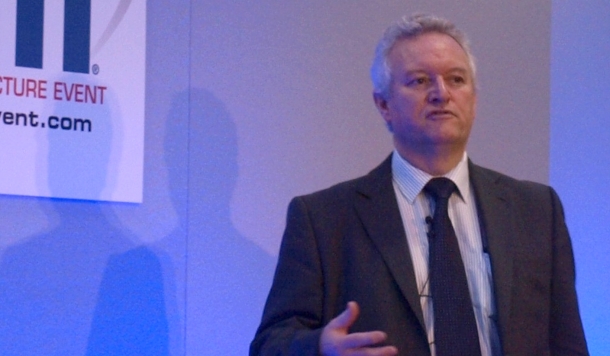Hundreds of government IT projects in firing line

The government is looking at scrapping or scaling back over 400 large IT projects as part of its plan to cut billions of pounds in public spending.
Bill McCluggage, the deputy government chief information officer, told an audience at the 360°IT event in London that departments had been asked to review each of their current projects to decide whether they should continue, be rescoped or cut. Around 419 projects were submitted in the IT project review, and departments are currently being informed of the decision on their status, he said.
"The first issue around today, in terms of our cost environment, is to obliterate — so actually taking out projects to start with," McCluggage said at the event on Wednesday.

Speaking at the 360°IT event in London, Bill McCluggage said that around 419 government IT projects are under review Photo credit: Jack Clark
In June, the chancellor George Osborne announced a plan to cut public spending by £39.1bn by 2015, with £6.2bn of cuts earmarked for 2010. The Treasury has already pledged to save £95m from IT budgets, and a freeze on new IT projects worth more than £1m was introduced in May.
Since the moratorium on new projects began, the Cabinet Office has fielded 140 requests for exemption from the ban, McCluggage said.
"They have not all been approved, they have not all been valid, and the figures in terms of what have been through and what have been agreed will come out hopefully in the next few days," he said.
However, some funds are still being authorised, particularly in cases where there is a day-to-day business requirement for urgent spending, he added.
McCluggage reiterated the other moves the government is making to keep a lid on future spending. It wants to increase the involvement of small and mid-size businesses in IT projects and to broaden the use of open-source software through open standards. In addition, it is working on consolidating its datacentre infrastructure and looking at licensing arrangements to help it consolidate its IT strategy, he said.
"This is the driver for me at the moment — to reduce the cost structure of information and communications technology in central government, while supporting technologies which increase citizen involvement, transparency and localisation," McCluggage said.
"We have a key direction of travel on open source, open standards," he added, explaining that the government hopes to draw attention to open-source software through its commitment to open standards. Desktop applications, he said, are prime candidates for open source's entry into central government IT.